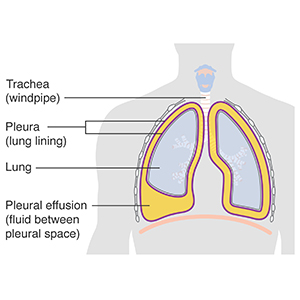Role of CRP as a marker for discrimination of exudative and transudative pleural effusion

Submitted: August 27, 2021
Accepted: March 10, 2022
Published: March 14, 2022
Accepted: March 10, 2022
Abstract Views: 1415
PDF: 495
Publisher's note
All claims expressed in this article are solely those of the authors and do not necessarily represent those of their affiliated organizations, or those of the publisher, the editors and the reviewers. Any product that may be evaluated in this article or claim that may be made by its manufacturer is not guaranteed or endorsed by the publisher.
All claims expressed in this article are solely those of the authors and do not necessarily represent those of their affiliated organizations, or those of the publisher, the editors and the reviewers. Any product that may be evaluated in this article or claim that may be made by its manufacturer is not guaranteed or endorsed by the publisher.
Similar Articles
- Cuneyt Tetikkurt, Nail Yılmaz, Seza Tetikkurt, Şule Gundogdu, Rian Disci, The value of exfoliative cell cytology in the diagnosis of exudative pleural effusions , Monaldi Archives for Chest Disease: Vol. 88 No. 3 (2018)
- Marco Ambrosetti, Roberto F.E. Pedretti, Mario Facchini, Gabriella Malfatto, Salvatore Pio Riccobono, Oreste Febo, Tommaso Diaco, Current activities of Cardiovascular Rehabilitation in the ambulatory setting of the Lombardy Region , Monaldi Archives for Chest Disease: Vol. 84 No. 1-2 (2015): Cardiac series
- U. Yilmaz, G. Polat, N. Sahin, Ö. Soy, U. Gülay, CT in differential diagnosis of benign and malignant pleural disease , Monaldi Archives for Chest Disease: Vol. 63 No. 1 (2005): Pulmonary series
- S.G. Chong, Z. Chauhan, E. Di Nino, A.O. Brien, B.P Casserly, Effusion under the microscope , Monaldi Archives for Chest Disease: Vol. 77 No. 1 (2012): Pulmonary series
- M. Shameem, J. Akhtar, U. Baneen, N. Ahmad Khan, R. Bhargava, Z. Ahmed, M. Shahid, M. Azfar Siddiqui, Malignant melanoma presenting as an isolated pleural effusion , Monaldi Archives for Chest Disease: Vol. 75 No. 2 (2011): Pulmonary series
- G.F. Tassi, G.P. Marchetti, V. Pinelli, S. Chiari, Practical management of pleural empyema , Monaldi Archives for Chest Disease: Vol. 73 No. 3 (2010): Pulmonary series
- A. Voulgaridis, V. Apollonatou, D. Lykouras, A. Giannopoulos, M. Iliopoulou, K. Karkoulias, P. Kraniotis, C. Prokakis, M. Gkermpesi, K. Spiropoulos, Pleural Mesothelioma in a young male patient , Monaldi Archives for Chest Disease: Vol. 79 No. 2 (2013): Pulmonary series
- B. Uskul, H. Turker, C. Ulman, M. Ertugrul, A. Selvi, A. Kant, S. Arslan, M. Ozgel, The relation of the pleural thickening in tuberculosis pleurisy with the activity of adenosine deaminase , Monaldi Archives for Chest Disease: Vol. 63 No. 2 (2005): Pulmonary series
- T. Zaga, D. Makris, I. Tsilioni, T. Kiropoulos, S. Oikonomidi, A. Damianos, K.I. Gourgoulianis, Hyaluronic acid levels are increased in complicated parapneumonic pleural effusions , Monaldi Archives for Chest Disease: Vol. 75 No. 3 (2011): Pulmonary series
- K. Psathakis, V. Skouras, F. Chatzivassiloglou, K. Tsintiris, Osteophytes may be a rare cause of recurrent pleural effusions , Monaldi Archives for Chest Disease: Vol. 79 No. 2 (2013): Pulmonary series
You may also start an advanced similarity search for this article.

 https://doi.org/10.4081/monaldi.2022.2059
https://doi.org/10.4081/monaldi.2022.2059





